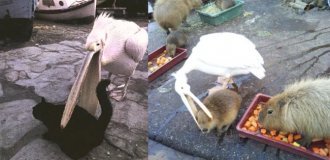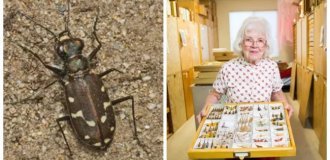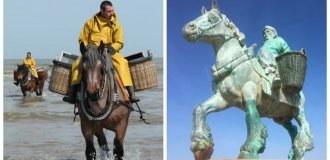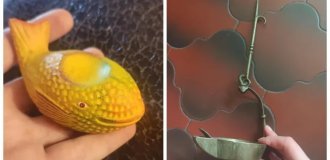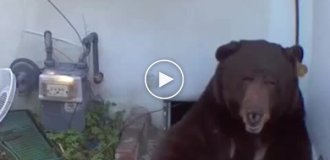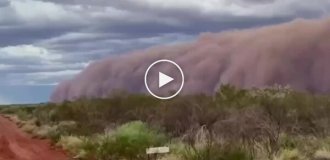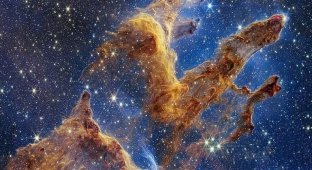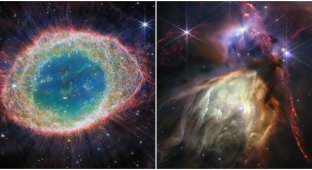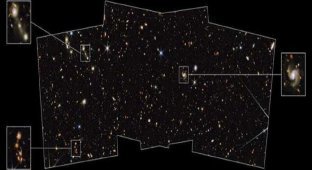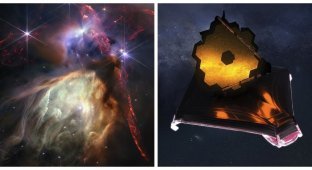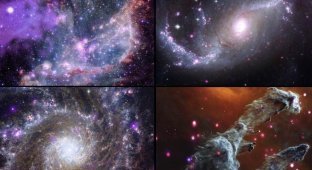The James Webb Telescope discovered mysterious paired objects the size of a planet (6 photos)
A new image from the James Webb Space Telescope shows the Orion Nebula in unprecedented detail. Dozens of paired Jupiter-sized objects that are neither planets nor stars have been discovered for the first time in the nebula. Astronomers called them JuMBO - Jupiter Mass Binary Objects (double objects with the mass of Jupiter). 
Jupiter-mass binaries are a new category of space objects that seem to defy classification. Scientists cannot yet explain how they appeared. In terms of mass, these objects resemble Jupiter, but they cannot be planets, since they do not revolve around the parent star. However, they cannot be stars either, since they are too small for this.
JuMBO's atmosphere contains steam and methane, and the surface temperature is approximately 1000°C. 
Wide-angle image of the Orion Nebula, located approximately 1,344 light-years from Earth 
In total, the telescope observed about 40 JuMBO pairs. This image shows five of them
According to the European Space Agency, data from ground-based telescopes hinted at the existence of JuMBOs before they were officially identified by James Webb.
"We looked for these very small objects and found them," said Professor Mark McCaughreen from ESA.
“We find them just one Jupiter mass in size, even half the mass of Jupiter, free floating, not attached to a star. Physics says that it is impossible to create even such small objects. We wanted to see if we could break physics? And I think yes, and that’s good.”
JuMBO's name includes the word "binary" because some of the objects exist in pairs, such as binary solar systems with two stars.
In total, the James Webb telescope observed about 40 JuMBO pairs. Although JuMBOs are too small to be stars, that doesn't mean they are planets. Firstly, they are “free-floating”, that is, they are not gravitationally tied to the parent star. They are hot and gaseous, have an atmosphere of steam and methane, and are about a million years old, making them "babies" in astronomical terms. 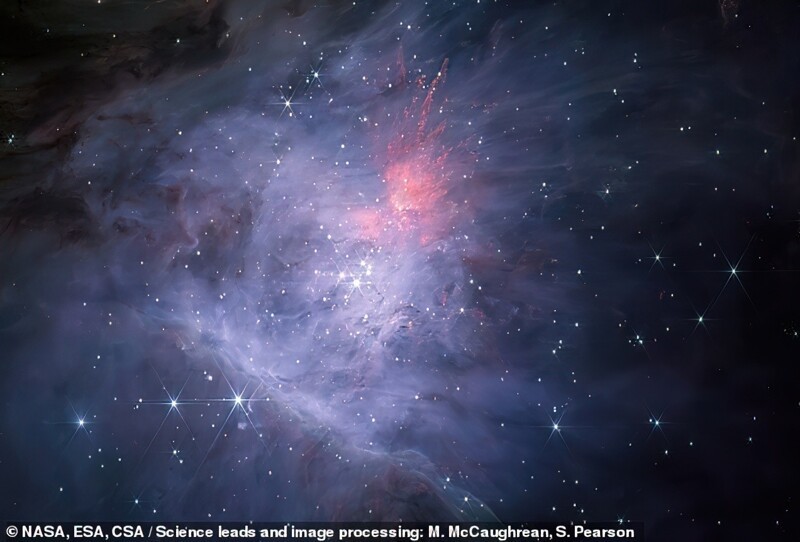
← Pull → 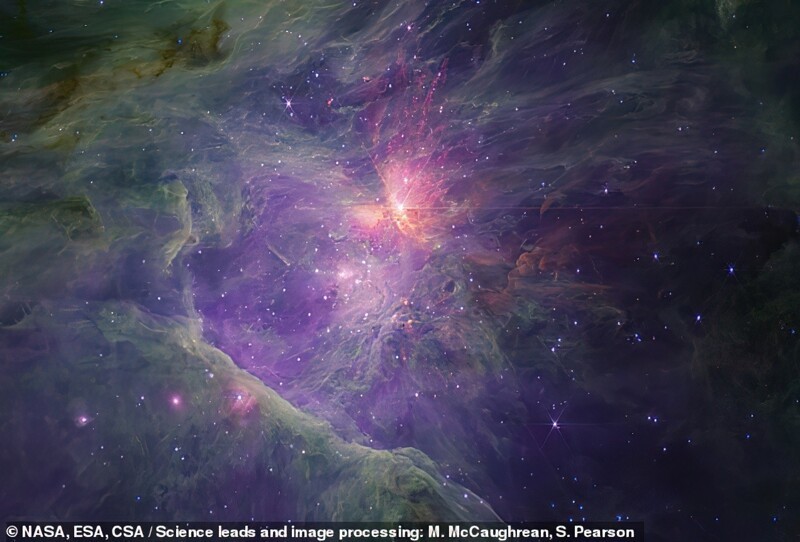
On the left, the image from Webb's shortwave NIRCam camera shows the nebula, its stars and other objects in high resolution near-infrared light. On the right is an image taken by Webb's long-wavelength NIRCam camera. It shows gas, dust and molecules in the infrared, but at a lower spatial resolution. The cavity is mostly filled with ionized gas, shown here in purple, while the surrounding environment is a mixture of dust and molecular gas, shown in red, brown, and green.
Because they are gaseous giants similar to Jupiter rather than rocky Earth or Mars, JuMBO is unlikely to have reservoirs of liquid water and is not considered a habitat for alien life. However, JuMBOs puzzle researchers at ESA and NASA because current theories of planet formation do not inherently explain their existence. Based on accepted theories, such objects the size of Jupiter should not have formed in the process that leads to the formation of stars inside the nebula.
A nebula is a huge cloud of dust and gas that occupies the space between stars and serves as a breeding ground for new stars. Nebulae form when a star larger than our Sun begins to die and releases a solar wind of gas.
The Orion Nebula, located about 1,344 light-years from Earth and also known as Messier 42, is located in the Milky Way, south of Orion's Belt in the constellation Orion.
Like most nebulae, the Orion Nebula is diffuse, that is, it has no clearly defined boundaries. It is also one of the brightest nebulae visible to the naked eye in the night sky.
ESA has released other new images of the Orion Nebula taken by James Webb: 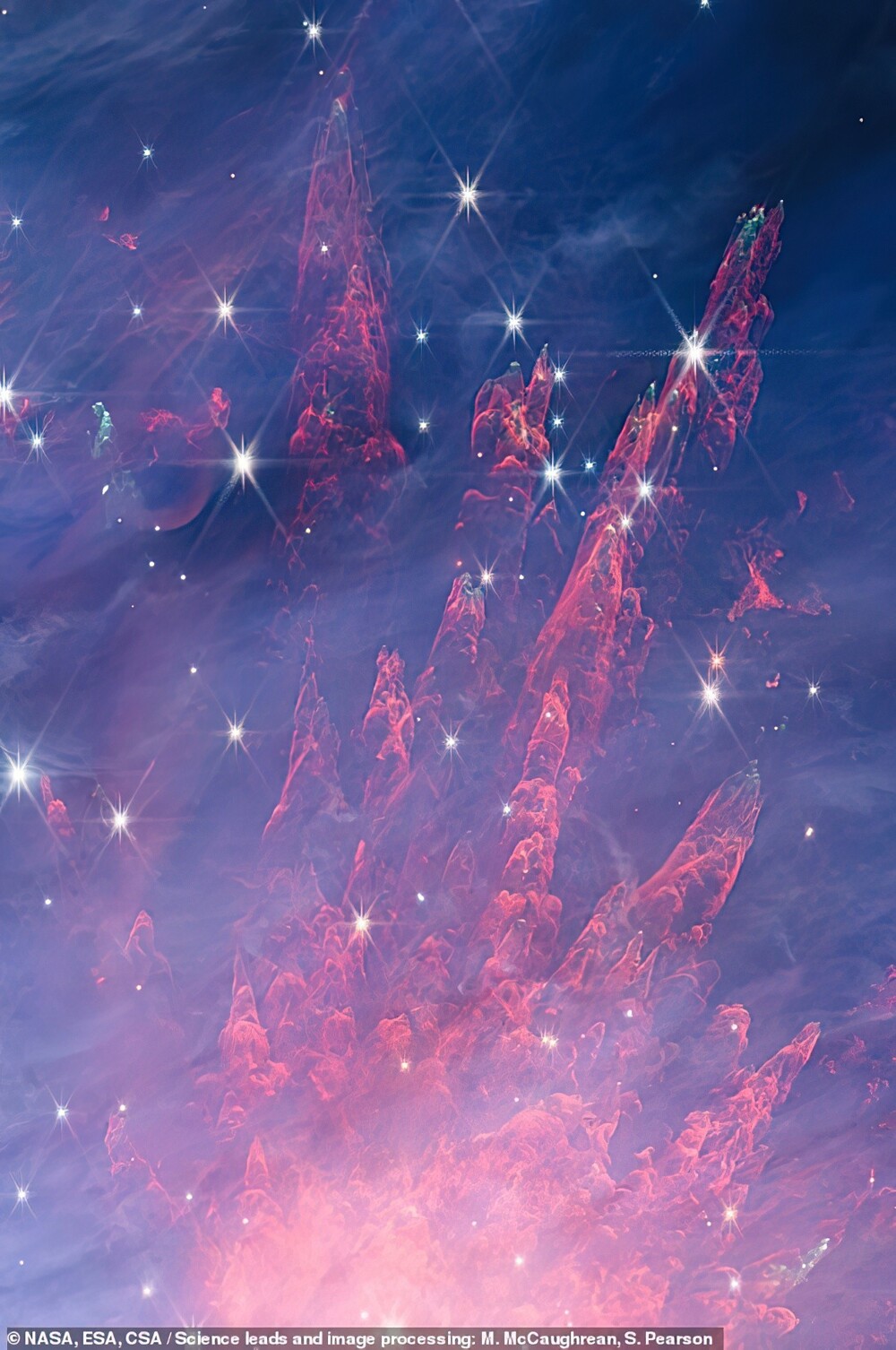
Shortwave infrared image of the Orion Nebula shows bright "fingers"gas carried away from an explosion that occurred approximately 500–1000 years ago in the heart of a dense molecular cloud behind the nebula, possibly during the collision of two young massive stars. 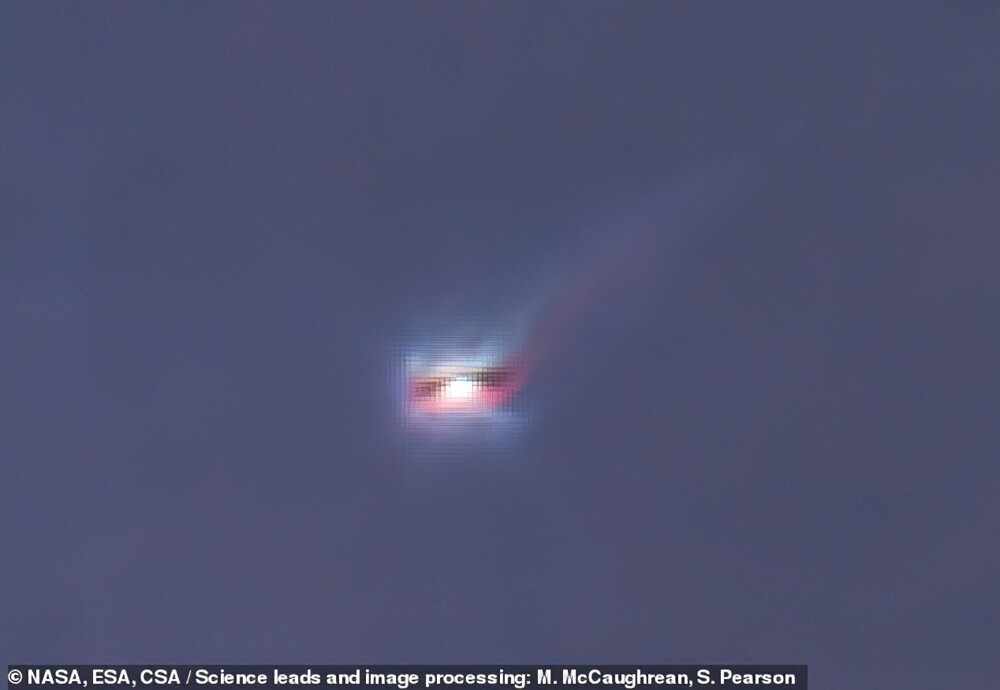
This short-wavelength infrared image of the Orion Nebula shows a young star and its protoplanetary disk shaped by intense ultraviolet radiation and winds from the massive Trapezium of Orionis stars located at the nebula's center
The James Webb Space Telescope is the largest and most powerful space telescope to date. 
ESA says the Orion Nebula is a treasure trove for astronomers studying the formation and early evolution of stars. Not only does it contain free-floating planetary mass objects such as JuMBOs and protostars (young stars that are still gaining mass from their parent molecular cloud), but also "brown dwarfs" - astronomical objects that are not exactly stars or planets. who are often called "failed stars". Brown dwarfs are more massive than planets, but unlike stars, they do not have enough mass to support nuclear fusion in their cores.
JuMBO and other features of the Orion Nebula can be explored on the ESASky online map. This is a free, user-friendly online interface for visualizing and downloading astronomical data.
